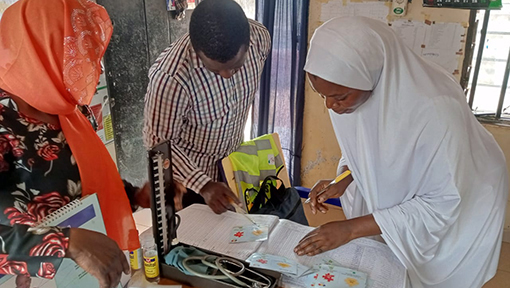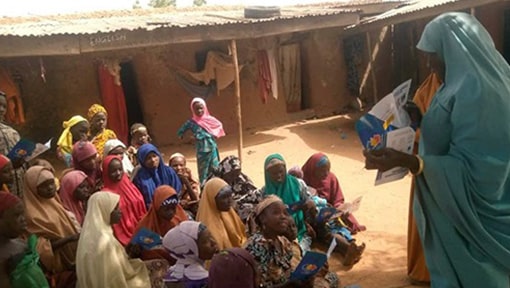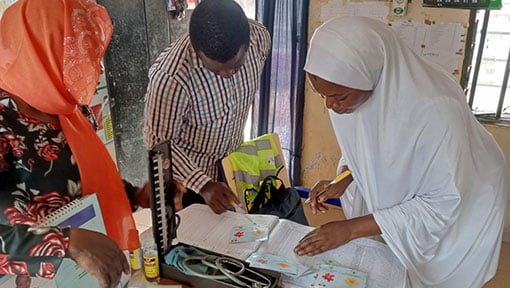Improving Saharanpur District’s Family Planning Data Also Improves its Family Planning Program
Contributors: Akbar Ali Khan, Samarendra Behera and Deepti Mathur
In the Saharanpur district of Uttar Pradesh, The Challenge Initiative for Healthy Cities (TCIHC) supports two city governments: Saharanpur and Muzzafarnagar. Saharanpur started implementing TCIHC’s high impact approaches –such as data for decision-making and fixed day static (FDS) approach – in October 2017 while Muzzafarnagar began implementation in October 2018.
After receiving TCIHC coaching support, Gurdeep Birla, the Divisional Urban Health Consultant of Saharanpur, shared what the high-impact approaches have meant to the district and how they are integral to the district’s family planning program success:
Earlier in district level review meetings, discussion was limited to permanent methods only. It was when the city partnered with TCIHC that more FP choices were made available at the urban primary health centers for the community through TCIHCs HIA on FDS, capacity building of urban Accredited Social Health Activists (ASHAs), data for decision-making (D4D) and capacity building of providers, etc. We, in the system, realized the non-availability of data on many important programmatic aspects, like age, number of children, etc. TCIHC’s coaching made ASHA) competent in completing the Urban Health Index Register (UHIR) and later with the 2BY2 prioritization tool, we learnt to identify community health workers [such as ASHAs and their supervisors, Auxiliary Nurse Midwife (ANMs)] who required more mentoring in order to increase FP uptake by the community.
With the holistic coaching on demand generation, service delivery and advocacy, we were now able to review several data dimensions, such as client uptake during routine vs FDS days, completeness of data from HMIS reporting, timely indenting of FP commodities through FPLMIS [Family Planning Logistics Management Information System] and preparation and use of due list for client prioritization. Besides, with our UPHC staff coached on HMIS and D4D, the errors in FP data at HMIS level started reducing.
The coaching that we received on the D4D HIA in particular helped our staff from 31 UPHCs as they learned which FP indicators need to be reviewed, platforms where FP data must be reviewed and who should review it to influence decision-making. As a result, we are able to efficiently advocate in the review meetings. Hence, we started preparing accordingly for each review, like for district review meeting, we would analyze HMIS data and for a UPHC level ASHA-ANM meeting, UHIR and 2BY2 data were mainly discussed.
Apart from the review meetings, on other meeting platforms like the Health Partner Forum meeting, due to TCIHC coaching, we were able to ensure focus on FP along with other agenda items. It was during one such meeting that a decision was taken to install direction sign boards to increase visibility of UPHCs and to facilitate easy access to them. In a city coordination committee meeting, we noticed that the client uptake for long-acting reversible methods was increasing and to meet the increased community demand, the committee decided to ensure three sets of IUCD kits at least at all the UPHCs. During National Urban Health Mission review meeting, it was decided that ASHA-ANM meeting must be called after each FDS is held. Of late, in a service providers meeting, we shared the success in urban FP and suggested the district’s technical support unit utilize TCIHC’s HIAs and 2BY2 tool.
We have learned that unless we review data regularly success cannot be met because we will fail to notice the gaps at the right time [to make corrective actions]. Being aware of this now, we have regularized our review meetings, improved data quality and utilize data for decision-making.”
As a result of TCIHC’s partnership with Saharanpur district, the women of Saharanpur and Muzzafarnagar now have an expanded mix of contraceptive methods with sterilization now representing a smaller proportion among the methods available in the basket of choices.


Source: District level HMIS, June 2016-Mar 2021. To prevent overestimation of short-term methods, HMIS data has been adjusted using standard couple-year protection, which is the total estimated protection provided by contraceptives in a one-year period.
* i). Condoms are also offered as a choice of method to people who visit health facilities.
* ii). COVID-19 pandemic has greatly impacted Year 5, especially from April 2020 to March 2021. This period in the graph is dominated by short-term methods as a result of government-imposed lockdowns, limited movement of communities and their fears concerning visiting facilities for longer acting methods.






